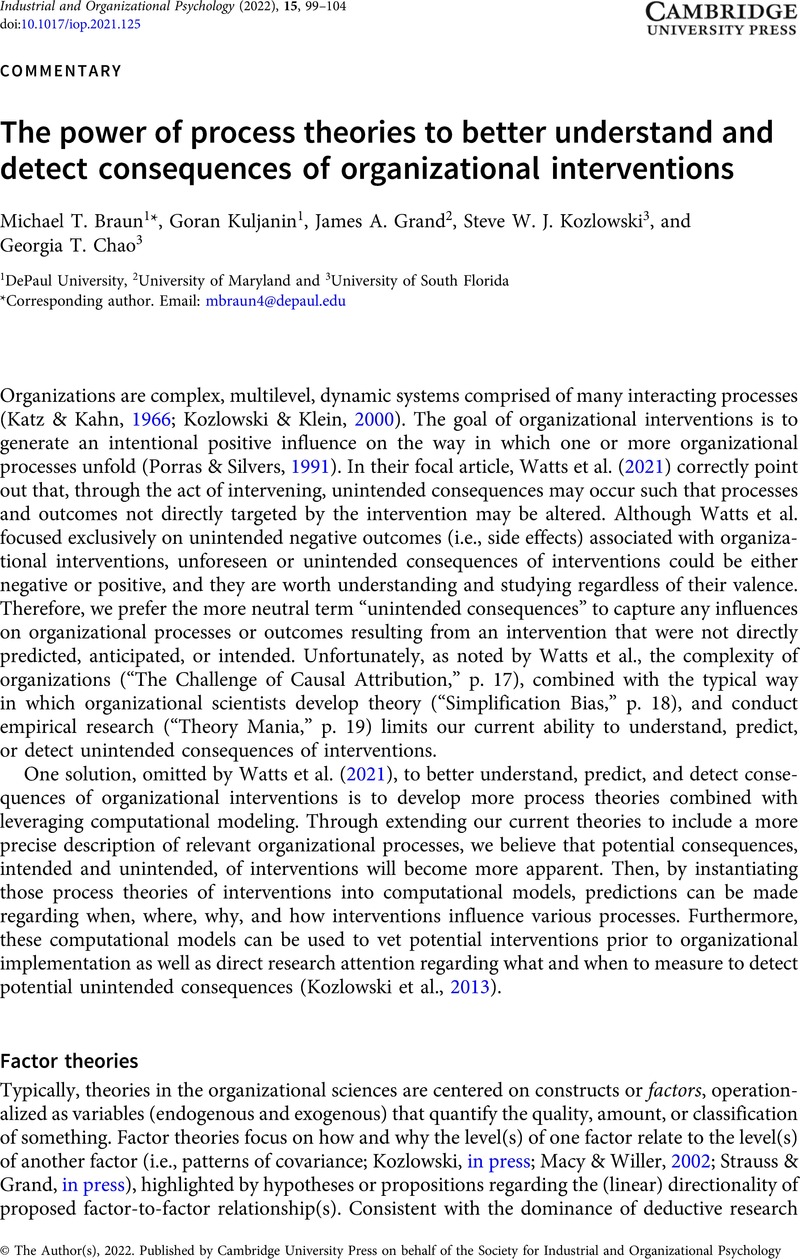Crossref Citations
This article has been cited by the following publications. This list is generated based on data provided by Crossref.
Olenick, Jeffrey
Eggler, Kristen D.
Bowker, Jenna
Kozlowski, Steve W. J.
Chang, Chu-Hsiang (Daisy)
Somaraju, Ajay V.
and
Griffin, Daniel J.
2024.
A Qualitative Investigation of Teamwork in Extreme Environments.
Group & Organization Management,
Kozlowski, Steve W. J.
2024.
A Multilevel, Emergent Journey to Unpack Team Process Dynamics.
Small Group Research,
Allen, Tammy D.
Shockley, Kristen M.
Ohya, Takaki
and
Schoffel, Molly
2024.
Theory testing and the work-family interface.
Journal of Management Scientific Reports,
Kuljanin, Goran
Braun, Michael T.
Grand, James A.
Olenick, Jeffrey D.
Chao, Georgia T.
and
Kozlowski, Steve W.J.
2024.
Advancing Organizational Science With Computational Process Theories.
The Leadership Quarterly,
Vol. 35,
Issue. 4,
p.
101797.
Wingert, Anne C.
2024.
Using Organizational Theory to Study, Explain, and Understand Criminal Legal Organizations.
p.
71.
Grand, James A.
Braun, Michael T.
and
Kuljanin, Goran
2024.
Hello World! Building Computational Models to Represent Social and Organizational Theory.
Organizational Research Methods,



